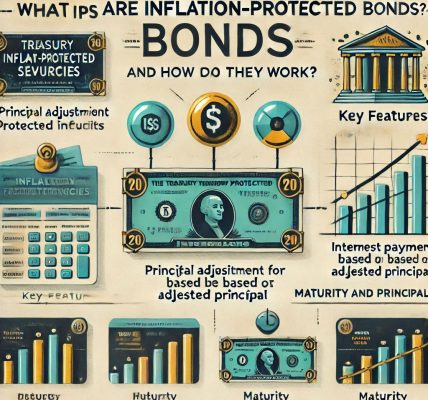Introduction
Understanding the relationship between interest rates and bond prices is crucial for investors. Whether you are a seasoned investor or a beginner, knowing how interest rate movements affect your bond investments can help you make informed financial decisions and optimize your portfolio.
This article explores how interest rates impact bond prices, yield, and overall returns while providing insights into strategies to navigate interest rate fluctuations.
The Inverse Relationship Between Interest Rates and Bond Prices
One of the fundamental principles of bond investing is the inverse relationship between interest rates and bond prices:
- When interest rates rise, bond prices fall.
- When interest rates fall, bond prices rise.
Why Does This Happen?
Bonds are essentially loans that pay fixed interest, known as the coupon rate. When new bonds are issued with higher interest rates, existing bonds with lower coupon rates become less attractive, leading to a decline in their market price. Conversely, when interest rates drop, older bonds with higher fixed rates become more valuable, driving up their price.
How Interest Rates Affect Bond Yields
Bond yield refers to the return an investor earns from a bond. There are different types of bond yields, but the two most common are:
- Current Yield:
- Formula:
- As bond prices decrease, the current yield increases and vice versa.
- Yield to Maturity (YTM):
- The total return an investor can expect if they hold the bond until maturity, factoring in price changes and interest payments.
- YTM adjusts based on market interest rate movements.
Interest Rate Sensitivity: Duration and Convexity
Investors must understand two key measures to assess how much bond prices will fluctuate with interest rate changes:
1. Duration
- Definition: Measures how much a bond’s price will change with a 1% change in interest rates.
- Higher duration = greater price sensitivity.
- Short-term bonds have lower duration, meaning they are less affected by interest rate changes.
- Long-term bonds have higher duration, meaning they are more sensitive to rate changes.
2. Convexity
- A more advanced measure that considers how duration itself changes when interest rates fluctuate.
- Higher convexity bonds see greater price gains when rates drop and smaller losses when rates rise.
Real-World Examples
Scenario 1: Rising Interest Rates
- Suppose you purchase a 10-year bond with a 5% fixed coupon rate for $1,000.
- A year later, new bonds are issued at 6%.
- Your bond’s price will fall because investors prefer newer, higher-yielding bonds.
- If sold before maturity, you may experience a capital loss.
Scenario 2: Falling Interest Rates
- If interest rates drop to 4%, your 5% coupon bond becomes more attractive.
- Investors are willing to pay a premium for your bond.
- If sold before maturity, you may earn a capital gain.
Strategies to Navigate Interest Rate Fluctuations
- Diversify Bond Portfolio
- Invest in both short-term and long-term bonds to balance risk.
- Use laddering by purchasing bonds with staggered maturities.
- Consider Floating-Rate Bonds
- These bonds adjust their interest rates based on market conditions, reducing sensitivity to rate changes.
- Hold Bonds Until Maturity
- If you hold a bond until its maturity, price fluctuations will not affect your return as long as the issuer does not default.
- Invest in Inflation-Protected Bonds
- Treasury Inflation-Protected Securities (TIPS) adjust for inflation, maintaining purchasing power.
Conclusion
Interest rates play a critical role in determining bond prices, yields, and overall returns. The key takeaway is that bond prices fall when interest rates rise and increase when rates decline. Understanding duration, convexity, and bond yield dynamics can help investors navigate these changes effectively.
By diversifying bond investments, considering floating-rate bonds, and aligning bond strategies with interest rate trends, investors can minimize risks and maximize returns in varying economic environments.




